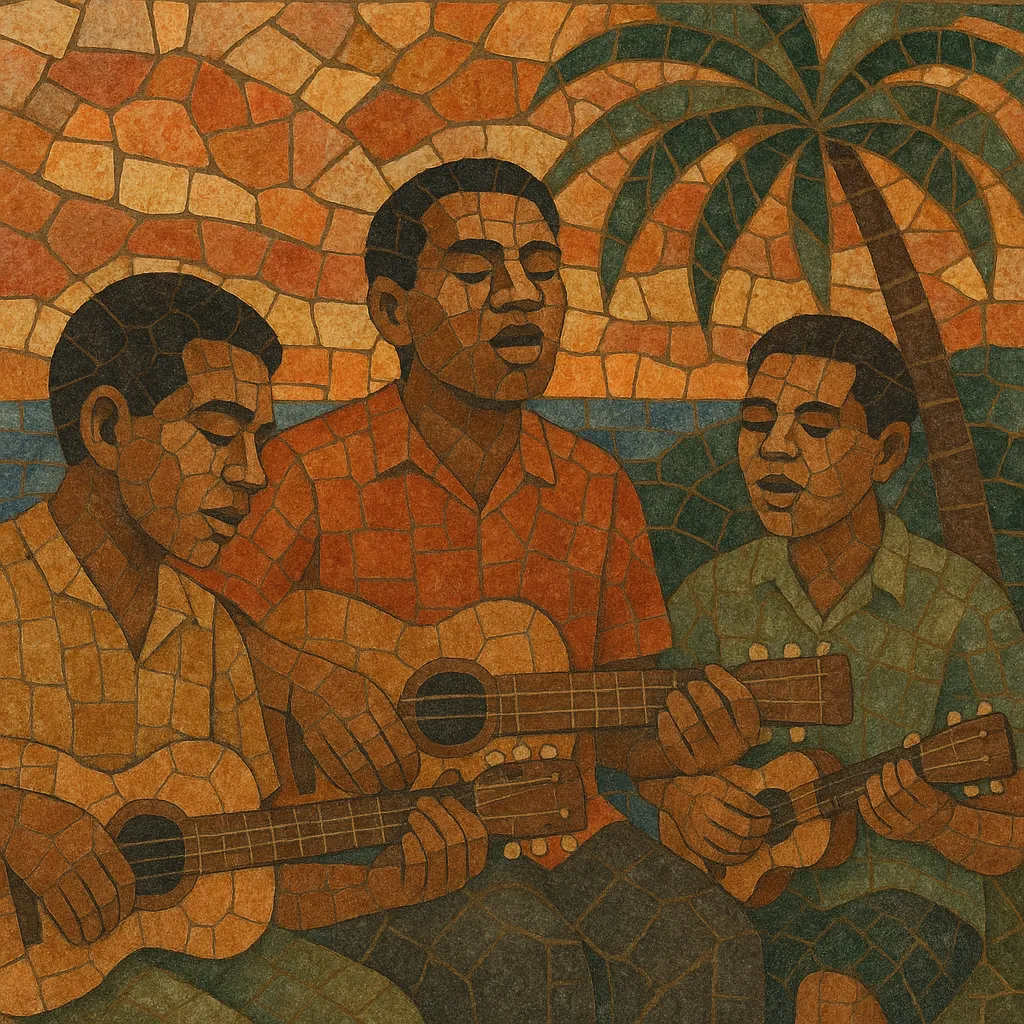Sigidrigi is a Fijian acoustic “string-band” serenade tradition characterized by close-harmony singing, gently swaying rhythms, and intimate, story-driven lyrics. It is typically performed with acoustic guitars and ukuleles, often in small vocal ensembles.
Culturally, sigidrigi is closely tied to social gatherings—especially evening kava (yaqona) sessions, village celebrations, and informal serenades. The repertoire tends to be romantic and nostalgic, reflecting themes of love, home, seafaring, and community life, and it favors diatonic melodies, call-and-response vocals, and soft, blended timbres over heavy percussion or amplification.
Musically, sigidrigi draws on Western hymn harmonies, Hawaiian strumming idioms, and country ballad songcraft, yet its phrasing, language, and communal performance practice make it distinctly Fijian. Its understated groove and vocal blend have also fed into contemporary Fijian popular styles.
Guitars and ukuleles entered Fiji through missionary activity, sailors, and inter-island exchange, while Western hymnody shaped local choral practice. By the 1930s, Fijians were adapting Hawaiian strumming patterns, country-style balladry, and close-harmony singing into small, informal ensembles—an acoustic format that came to be known as sigidrigi (serenade-style night singing).
As radios and records spread through the Pacific, sigidrigi absorbed more Hawaiian and American popular influences while retaining iTaukei language, themes, and village-based performance norms. The idiom became a go-to soundtrack for kava sessions and community events, with three- and four-part harmonies and gently pulsing strums becoming signature traits.
Local labels and broadcast media began documenting village ensembles and urban groups, helping codify common repertoire and vocal blend. The acoustic format and melodic sentiment of sigidrigi informed newer Fijian pop movements, and artists moved fluidly between traditional serenade settings and studio recordings.
Today, sigidrigi endures as a living social tradition and a foundation for contemporary Fijian styles such as vude and Pacific reggae. Its soft rhythmic feel, communal harmonies, and romantic narratives continue to shape Fijian popular music while remaining central to village life and cultural identity.


